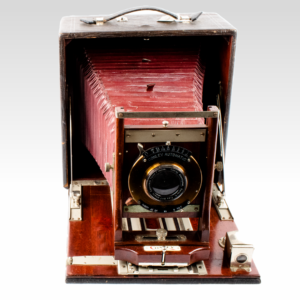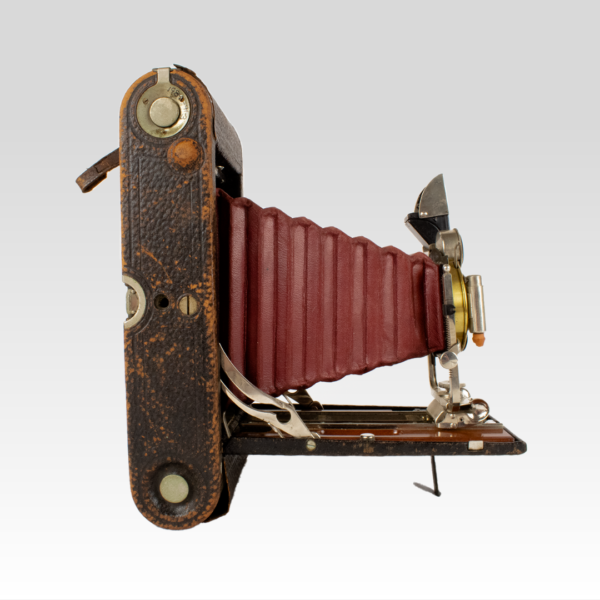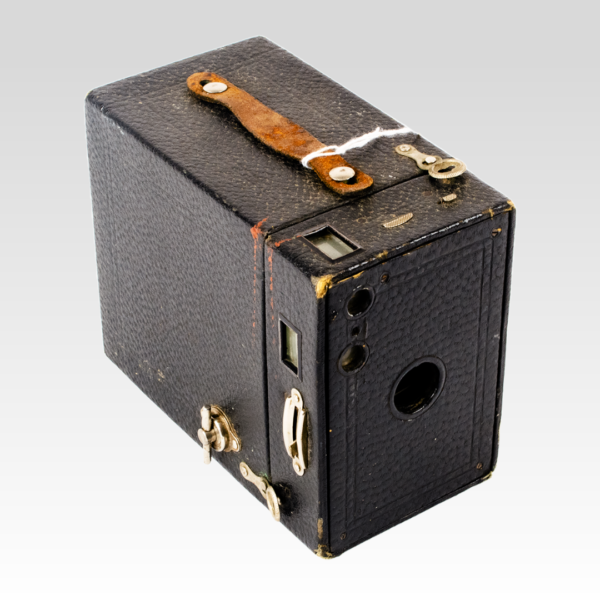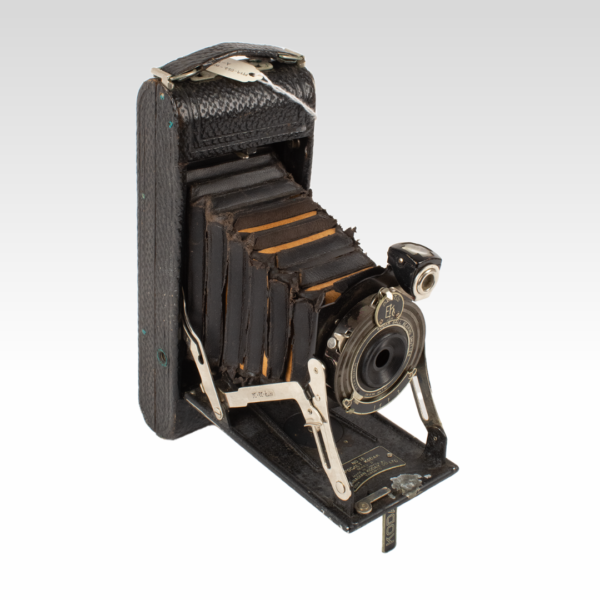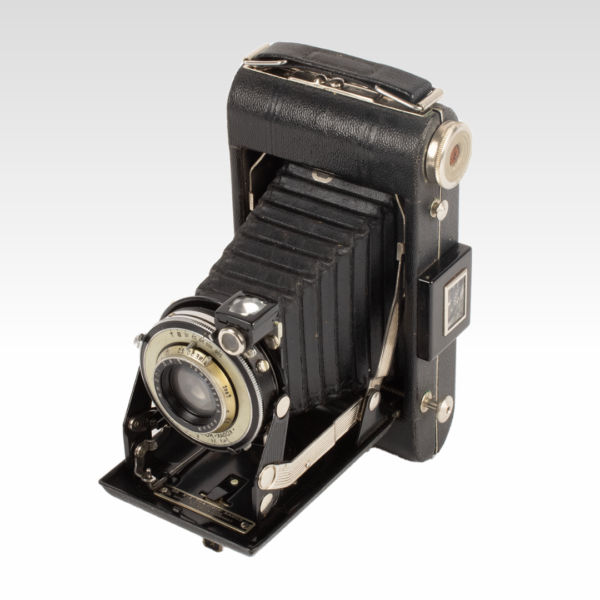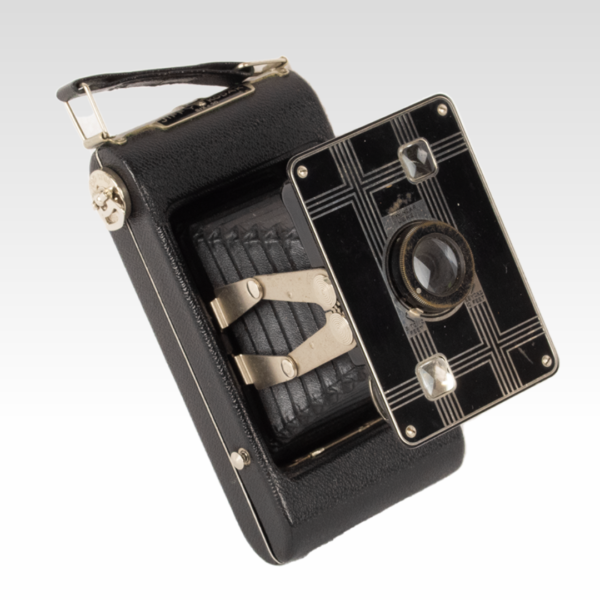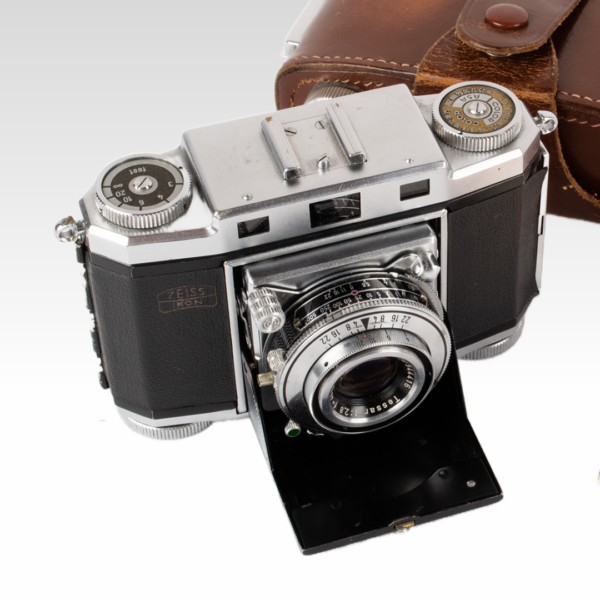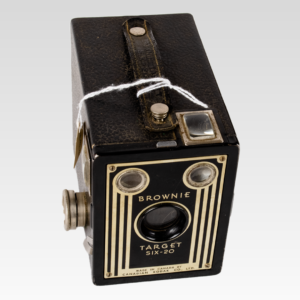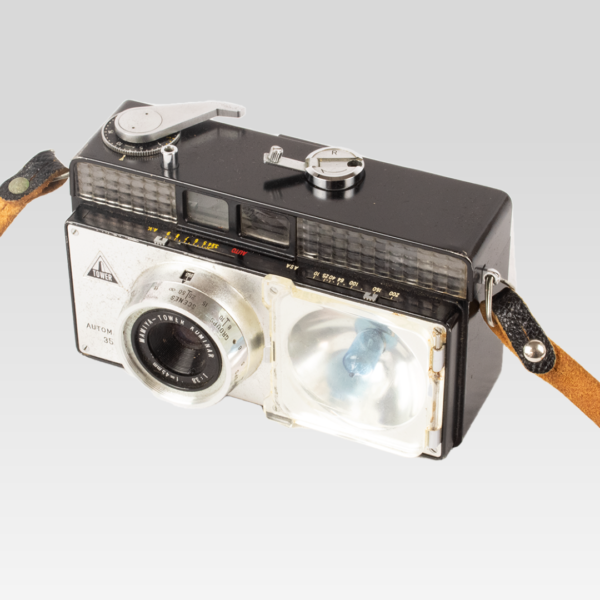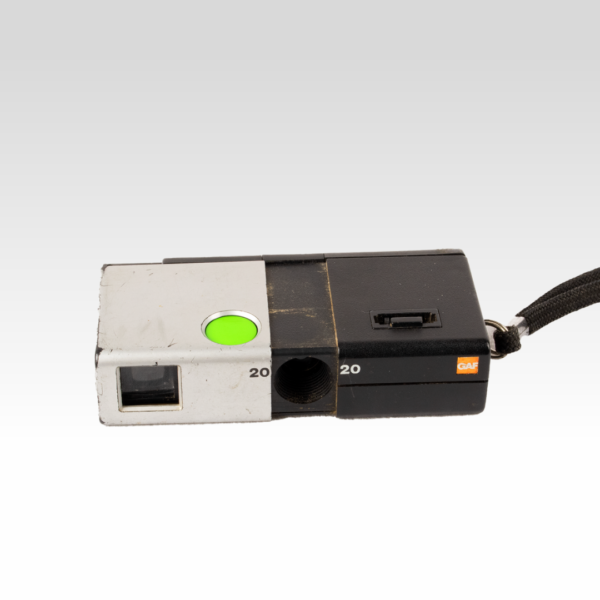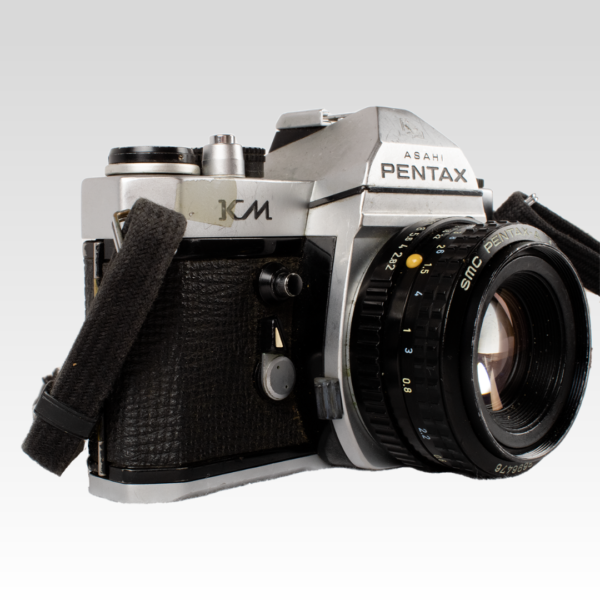Cameras are everywhere in our modern world: in our phones, outside our houses, and at our places of work. We capture and share images at an unprecedented rate, and we in turn are captured and shaped by the power of images. The camera entered into everyday life in the late 19th and early 20th Century, and the many images captured with cameras throughout the last century shape our historical understanding and imagination.
The 20th century was a remarkable time for invention. Life was to change wildly, as new inventions, new fashions, new ideas, and terrible wars turned the world upside down. The years from 1900-2000 saw the introduction of television, radio, refrigerators, space flight, the Internet, and incredible new technology for capturing photographs. All this was happening as people contended with the violent impacts of the World Wars, suffered economic distress during the Great Depression, listened to rock music, and, eventually, entered hopefully into the space age.
The camera changed drastically in size, form, and function throughout this time, and the end of the century would see photographers through the switch to digital technology. Presently, our lives are more dominated by pictures than ever before, with some contending that the written word has fallen to the wayside before the power of images. Below, the history of this technological change is examined through a collection of cameras housed at the Mission Museum.
This was the era of those iconic folding cameras with the beautiful red bellows! These cameras were smaller, and more portable than ever before. However, the cost of cameras like the No. 3-A Pocket Kodak Folding Camera was still prohibitive to many people, and so George Eastman, creator of Eastman Kodak, introduced the Brownie Camera, which sold at first for just $1.
Portable and folding was the most popular design for cameras from the 1890s to the 1930s. The primary identifiable feature on these cameras were the bellows, which folded and unfolded so that the camera could be fairly compact while not in use.
Pictured here is the Conley Double Extension Camera (Model XVIA) which was manufactured from 1900 – 1918. The Conley Camera Company had been founded in 1899 by two brothers from Minnesota. Kerry and Frederick Conley, as they were called, had originally belonged to the jewellery business, but transitioned into cameras after their first successful camera was complete. In 1903, their luck took a turn for the better, and they entered into a contract with Sears, Roebuck, & Co., and took over the manufacture of all its cameras. Sears, Roebuck, & Co. advertised the new Conley Cameras as providing “improvements of all kinds.” Despite the fact that the Conley Camera Company was making affordable cameras for the average consumer, their cameras are acknowledged as having excellent craftsmanship and good design.
1972.109.022
Conley Automatic Folding Camera (c. 1907)
1984.041.003
No. 3 A Pocket Kodak Folding Camera Model B-4 (1903-1915)
Undeniably, one of the greatest players in the 20th century cameras industry was George Eastman, the creator of Eastman Kodak. His desire to make a simplified and portable camera came from his own experience lugging heavy camera equipment about, and after many experiments in product design, he entered the market in the 1880s. Prior to his inventions, it was necessary to carry about a very large camera, chemicals, plates, a tent, and a tripod in order to take a photograph. That’s a lot of labour!
The No. 3-A Pocket Kodak in Model B-4, is one of the older models patented by Kodak. The design of this camera held patents dated from 1894 to 1902, and would have been produced between 1903 and 1915! in 1888, Eastman had invented flexible roll film, which could replace the hard plates previous used in photography, and thus took up much less space. This camera was designed for a 3¼ × 5½ inch postcard format on No. 122 roll film.
1973.029.006
No. 2 A Brownie Camera (c. 1907)
World War I began in 1914, and cameras took on a new significance as tools for reporting the war. Photos of the battlefields circulated, bringing the horrors of war to the public conscience as only a photograph can. Japan ceased ordering camera parts from Germany, and the German camera industry suffered. Kodak’s 1912 Vest Pocket Kodak was a staple on the battlefield, particularly among American soldiers.
1979.022.002
The Pocket Kodak No. 1 Series II (c. 1922-1931)
The Pocket Kodak No. 1 Series II Camera was a folding camera produced from 1922-1931. It used A120 film, and was compatible with the novel autographic film produced by Eastman-Kodak from 1914-1934, which allowed the photographer to caption their photos by inscribing directly onto the negative! Cameras in this period were considerably smaller than those commonly seen at the beginning of the century, and were truly becoming more portable for the average person to use. Kodak referred to these cameras as “amateur cameras,” and intentionally marketed them to the average person who wished to experiment in photography.
Kodak was a successful company in part because they did an excellent job of marketing the Kodak photographic community. The first page of the Pocket Kodak No. 1 Series II Camera Manual announced that the purchase of an amateur camera like the Pocket Kodak came with a free subscription to “Kodakery,” a monthly magazine “that teaches how to make better pictures.”
The Pocket Kodak was marketed under such slogans as “In Action in a Wink,” and “Good pictures with a new convenience.”
In the aftermath of World War I, the idea of reporting news with the aid of photographs had become more commonplace. Photos of World War 1 had circulated widely, and now, some of the photographers that had captured the war went on to be photojournalists, reporting on sports, current events, and more. The photograph had won a permanent place in the newspaper and magazine.
The Kodak Vigilant Six-20 was produced between 1939-1949. It sold at first for $38 US dollars, and used Kodak 620 film.
2007.084.001
Kodak Vigilant Six-20 (1939-1949)
1991.002.042
No. 1 Autographic Kodak Junior Manual
This image from a Kodak camera manual shows detailed instructions, which allowed even inexperienced amateur photographers to learn how to operate a Kodak.
The camera shown here is the Jiffy Kodak Six-20, which was manufactured between 1933 and 1937, and used 620 roll film, as the name indicates. This camera is particularly notable for the Art Deco design on the front plate.
Art Deco was an approach to visual arts which was popular internationally in the 1920s and 1930s. It touched almost everything, from clothing and every day objects (like cameras!) to vehicles and architecture. The Art Deco approach brought together modern materials and fine craftsmanship, which together showed off new inventions and technological developments to good effect, and added to their consumer appeal. In the 1930s, Art Deco came to adopt an increasingly polished, metallic, and streamlined look, which can be seen on the front plate of the Kodak Jiffy Six-20 Camera.
1975.053.035
Jiffy Kodak Six-20 (c. 1933 – 1937)
The stock market crash of 1929 brought misery and hardship. The Great Depression had wide reaching impacts, but the camera industry kept on chugging. Campaigns utilized the photograph to demonstrate the suffering of transient and jobless citizens, and defined a new era of documentary photography and journalism. Photographic projects commissioned by the Farm Security Administration in the United States of America called upon people to offer compassion and aid to struggling workers.
Despite the Great Depression and the after effects of the First World War, technology was advancing rapidly. New materials and technologies impacted the rise of Art Deco, which influenced the design of many cameras, such as the Jiffy Kodak Six-20 pictured above.
2021.066.001
Zeiss Ikon Contina II (1952-1953)
This might surprise you, but you are still looking at a folding camera! The front panel opens and closes, and the camera expands automatically when open. The short bellows remain hidden within the camera body. Manufactured in Germany, in 1952, it was one of the last folding cameras manufactured under the Zeiss Ikon name. This is a 35 mm film camera, and is one of the more affordable versions produced by Zeiss in its time. This camera is pocket sized, and has a much more similar appearance to the cameras we know today than the earlier folding cameras of the 20th century.
World War II had major effects on Japanese and German camera production, and camera manufacturing factories were converted for wartime uses. Post war, camera sales helped to bring in much needed foreign currency in Japan, and were part of the effort to restore the Japanese economy.
Despite the successes of brands like Canon (Japanese), Nikon (Japanese), Zeiss (German) and Minolta (Japanese-German) in this period, Kodak (U.S.A) remained the unquestioned leader in the market. Continued developments and the frequent release of new cameras kept them on top. The dominance of the Kodak cameras throughout most of the 20th century is reflected in the collections of the Mission Museum, as most of our cameras are Kodak.
Since the beginning of the 20th century, the Brownie camera had continued to flourish. This model was first produced in 1946, and was one of the most popular models of all time. The classic shape of the Brownie Camera is maintained in this version, but the front design shows that inspiration was still being drawn from Art Deco, which had been so popular throughout the 1930s.
1976.004.026
Brownie Target Six-20 (1946-1952)
By the 1960s, the 35 mm camera was a mainstay, and out-competed many other formats. In fact, a 35 mm camera, the Ansco Autoset, was the first camera to enter space when John H. Glenn Jr. took it with him on his journey into orbit in 1962.
The famous mail-order and retail store Sears, Roebuck, and Co. continued to dominate the scene in North America throughout the 1950s and 1960s. Sears had sold Conley cameras in the early 20th century, as well as cameras created by many other companies, and the company even created its own in-house branding for certain cameras, one of which was the “Tower” brand. Many claim that Sears used the name “Tower” as a reference to the famous Sears Tower in Chicago, but they were producing products branded was “Tower” well before the Sears Tower was constructed in the early 1970s.
This particular camera was actually produced in Japan by a manufacturer called Mamiya, but was rebranded as the Tower 39 for sale through Sears in 1961.
2007.038.001
Tower 39 Automatic 35 (1961)
2009.004.004
GAF Compactible Camera 20/20 (c. 1970)
“We’ve gone the Pocket Camera one smaller” was the proud declaration on the box that held this camera.
This little device was a product of the 1970s, and was sold under the brand name GAF, which stands for General Aniline & Film. The camera was advertised as easy to use, since the user simply had to pull the camera open to shoot, and as a convenient pocket camera, given its small size. It shot colour film, and presented a very different look from camera styles which preceded it.
In just 70 years, cameras had evolved to a fraction of the size seen at the beginning of the century, and they were even more portable! Whereas once camera work was left to the professionals, now anyone could easily buy and use a camera from Sears, or from any of the competing camera sellers around North America, such as GAF.
This 35 mm camera is an SLR, which stands for Single Lens Reflex. Single Lens Reflex cameras use a mirror and a prism to ensure that the image the photographer sees through the viewfinder is the same as the final image. Incredibly, this was not always the case!
This particular Asahi Pentax was donated by Glen Kask, who was a reporter and photographer at the Mission City Record from 1986 until the turn of the century. It was used at the Mission City Record as a reporter’s camera until, at last, the switch was made to digital photography.
2011.163.013
Asahi Pentax KM SLR (1975)
The first digital camera had been produced at Kodak in 1975 by Steven Sasson. However, it took some time and some improvements before the new technology really took off, and for many, digital photography would not become a reality until around the year 2000. This was certainly true for photographers in Mission.
When digital did, at last, take off, it really took off. Digital photography was easier than film, and in some ways cheaper. It also eliminated the need for a specialized skill set in order to capture and view images. The citizen journalist was born of the digital age, and now nearly everyone has the ability to capture and share photographs via the internet. A lot changed in just 100 years!


